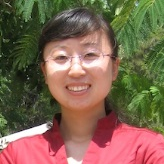STEM Education: Creative Designs and Models
A special issue of Education Sciences (ISSN 2227-7102). This special issue belongs to the section "STEM Education".
Deadline for manuscript submissions: 31 December 2024 | Viewed by 2335
Special Issue Editors
Interests: creativity studies; STEM education; science communication; participatory science; pedagogical design; problem- and project-based learning; teacher education; AI and education; playful learning
Special Issue Information
Dear Colleagues,
The initiative of STEM education was proposed by the National Science Foundation in the US in the late 1990s. It was expected to provide students with critical thinking skills that would make them creative problem solvers and, ultimately, more marketable in the workforce (White, 2014). It typically includes educational activities across all grade levels, from pre-school to post-doctorate, and in both formal and informal classroom settings (Kennedy & Odell, 2014).
Recently, STEM education has been viewed as foundational for economic growth by many other countries such as the UK, Australia, Canada, Denmark, Spain, Germany and China (Zhou, 2020). Driven by the movement, diverse research areas have been explored, including education reform (Talanquer, 2014), learning materials (Sirakaya & Sirakaya, 2020), academic culture (Suchman, 2014), education design (Lowrie et al., 2018), etc.
This Special Issue focuses on creative designs and models in STEM education. This involves the principles, processes, and practices of pedagogical designs and development of diverse teaching methods and instructional models. This also involves problem-based learning, project-based learning, inquiry-based learning, art-based learning, online teaching and learning, social emotional learning, diverse methods of active learning, etc. In this Special Issue, original research articles and reviews are welcome. Research areas may include (but are not limited to) the following:
- Theories and concepts for developing creative designs and models;
- Technologies and tools that support processes of teaching and learning;
- Blended and hybrid learning environment design;
- Design methodologies in university teaching and learning;
- Models of continuing professional development;
- Participatory models and students’ engagement;
- The link between formal and informal learning environments;
- Evaluation of the creative pedagogical designs and models;
- Designing inclusive and accessible learning experiences and materials;
- Education design for 21st century skills.
We look forward to receiving your contributions.
White, D. W. (2014). What is STEM education and why is it important?. Florida Association of Teacher Educators Journal, 14(1), 1-9.
Kennedy, T. J. & Odell, M. R. L. (2014). Engaging students in STEM education. Science Education International, 25(3), 246-258.
Zhou, C. (2020). Introducing Problem-Based Learning (PBL) for Creativity and Innovation in Chinese Universities: Emerging Research and Opportunities. IGI Global.
Talanquer, V. (2014). DBER and STEM education reform: Are we up to the challenge?. Journal of Research in Science Teaching, 51(6), 809-819.
Sirakaya, M. & Sirakaya, D. A. (2020): Augmented reality in STEM education: a systematic review. Interactive Learning Environments, DOI: 10.1080/10494820.2020.1722713.
Suchman, E. L. (2014). Changing academic culture to improve undergraduate STEM education. Trends in Microbiology, 22(12), pp. 657-659.
Lowrie, T., Leonard, S. & Fitzgerald, R. (2018). STEM Practices: A translational framework for large-scale STEM education design. Educational Design Research, 2(1), 1-20.
Dr. Chunfang Zhou
Dr. Wei Zhang
Guest Editors
Manuscript Submission Information
Manuscripts should be submitted online at www.mdpi.com by registering and logging in to this website. Once you are registered, click here to go to the submission form. Manuscripts can be submitted until the deadline. All submissions that pass pre-check are peer-reviewed. Accepted papers will be published continuously in the journal (as soon as accepted) and will be listed together on the special issue website. Research articles, review articles as well as short communications are invited. For planned papers, a title and short abstract (about 100 words) can be sent to the Editorial Office for announcement on this website.
Submitted manuscripts should not have been published previously, nor be under consideration for publication elsewhere (except conference proceedings papers). All manuscripts are thoroughly refereed through a double-blind peer-review process. A guide for authors and other relevant information for submission of manuscripts is available on the Instructions for Authors page. Education Sciences is an international peer-reviewed open access monthly journal published by MDPI.
Please visit the Instructions for Authors page before submitting a manuscript. The Article Processing Charge (APC) for publication in this open access journal is 1800 CHF (Swiss Francs). Submitted papers should be well formatted and use good English. Authors may use MDPI's English editing service prior to publication or during author revisions.
Keywords
- STEM education
- design
- instructional model
- practice
- technology
- teacher education
- 21st century skills
- participation
- assessment
- formal and informal learning
- inclusive education






